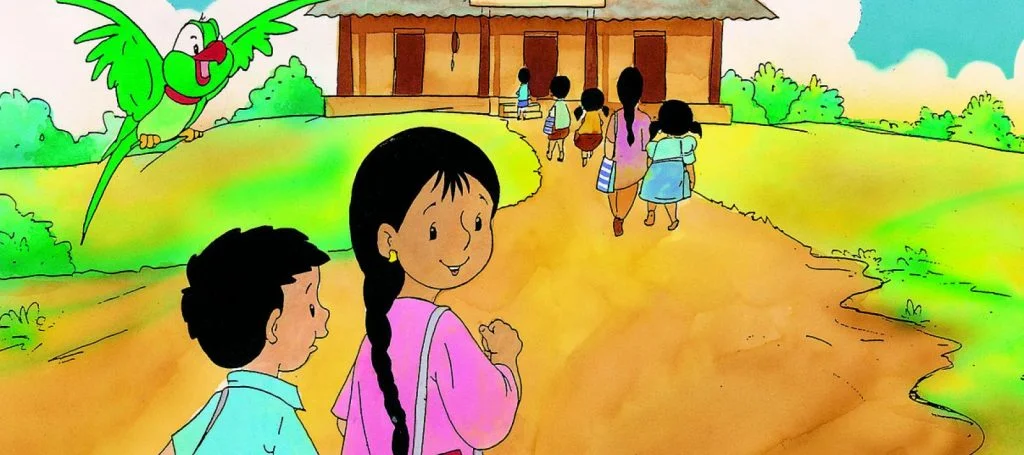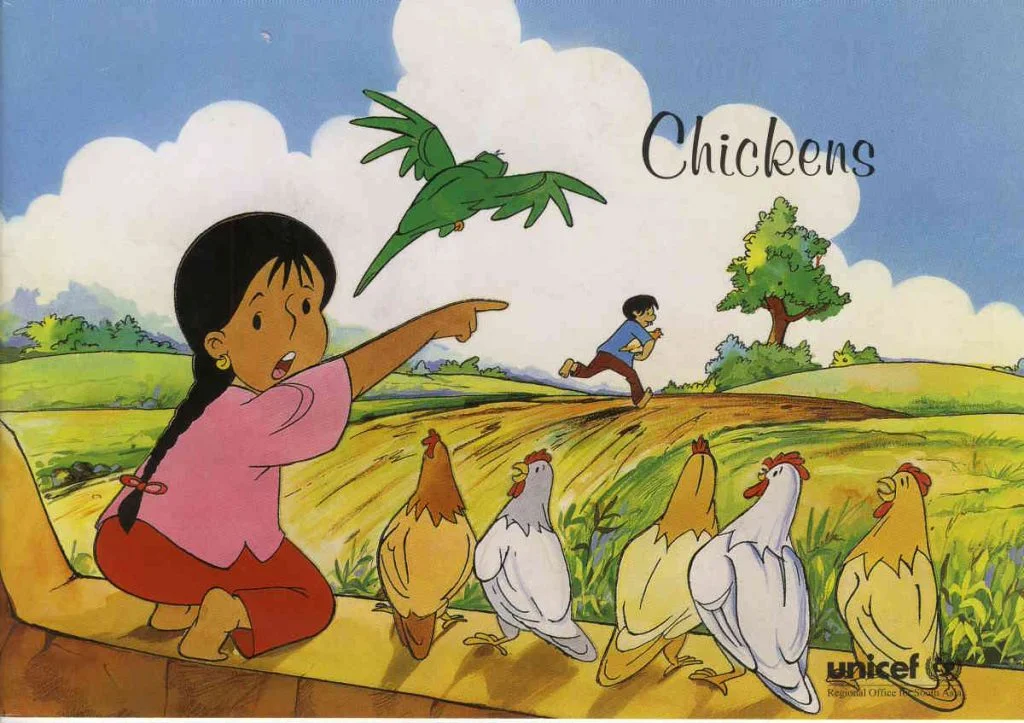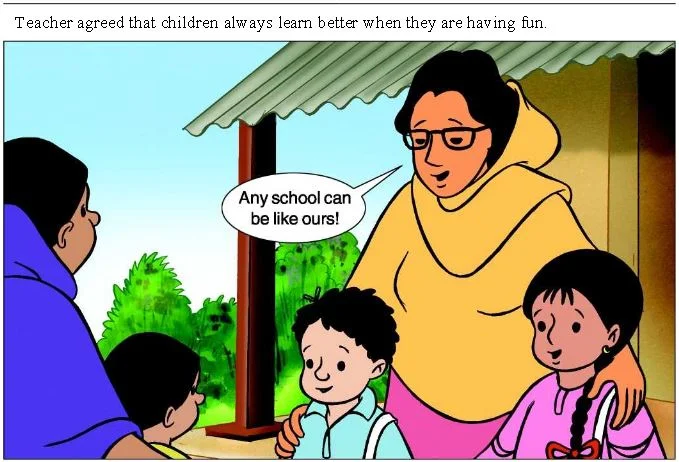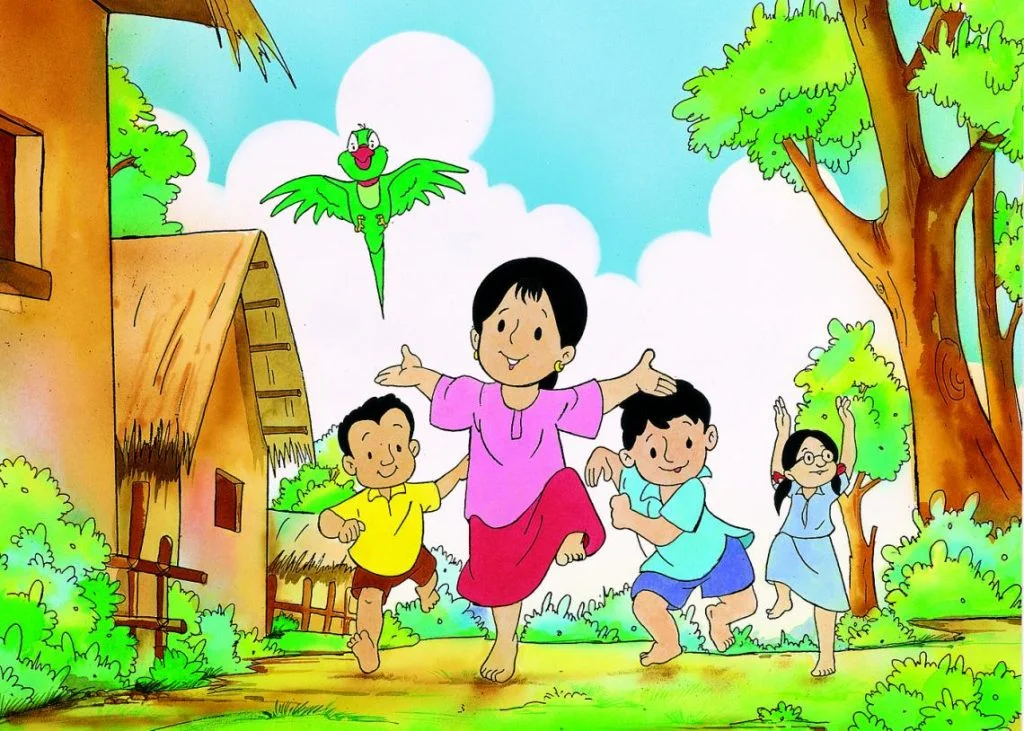Imagine a day in your life when your younger brother is going to school and being encouraged to pay attention to his studies whereas, you, for being a daughter, are forced to stay back at home and help with the households; again imagine, that brother being provided more food, just because he is a boy, than you get from the same household. Doesn’t make much sense now, does it? Well, it actually didn’t; although, it was the reality and not long ago.
1990’s- an era when the whole world went through a lot of changes that redefined how the society should behave and prepared it to step into the new millennium, while at the same time carried some of the deep-rooted, centuries-old, embarrassing prejudices- especially, regarding girls residing in villages of South Asian countries; however, the cities were not much spared of those prejudices either. Then came December of 1992 that introduced the world with a very simple, but not-so-typical, even a bit revolutionary, female character through an animated cartoon series named- Meena. UNICEF Bangladesh initiated this project after performing a lot of research and groundwork to come to the concept, names, backgrounds, and stories of that animated series. Mostofa Monowar, Shishir Bhattacharya and other top-ranked Bangladeshi artists were involved in creating the characters. The series was broadcast in Bengali, English, Hindi, Nepali, Urdu, Pashto and Portuguese. It received unprecedented success and the lead character became an overnight icon from its very first episode titled ‘Count Your Chickens’. A UNICEF study found out that 95% of Bangladeshis know Meena and it was obvious, for the show was aired on Bangladesh Television (back then, satellite channels were not available yet).

From a very early age, girls in this region were taught to abide by all the norms & regulations set by the society and not to have a voice, let an alone sense of equal rights, in any matter; simply follow what has been instructed or ordered by the male counterpart. Education for girls was strictly forbidden in many areas for centuries; although, few revolutionary women broke out of that shackle and created a name of their own in the history of the sub-continent. Yet, basic education was not established as a simple human right for girls as it was for boys. Meena, along with her brother Raju and pet parrot Mithu, changed this view drastically with their very first appearance.
In the first episode, she was shown as a sad little girl upon being stopped from joining her brother, in attending school. Then she came up with the idea of sending her parrot instead, to learn the lessons taught at school. It was Mithu who taught her a simple table of 3. She practiced the table and learned that they had 6 chickens. At one point, she found out there was one chicken missing from the lot. This eventually made her family realized that educating a girl child by sending her to school, is actually not only necessary for herself but also helpful for the whole family. That was the start.
Slowly, with each episode, she broke many social taboos and changed society’s perception regarding not only female education but also regarding issues like equal rights, proper sanitation system for all, female hygiene, washing hands with soap before meal & after using toilet, dowry, eve teasing, bullying, how modern medication is better than age-old home remedies, immunization, children’s right to play, proper way to childbirth, breastfeeding and many such things. She even broke the stigma regarding HIV/AIDS that it spreads through touch and thus making people be empathetic & kind towards the patients. At one point, she was brought into the city and when she was mistakenly considered a ‘maid’ for the concerned house, it shook the society’s long-established views on child labor. The 37th & last episode showed how life changes for the war victims and refugees of Kashmir and what it’s like to reunite with family.

Meena has been a happy part of all the kids of ’90s and even for kids of today. She is the most effective teacher to make children feel excited about going to school and liking the whole process of the education system. She taught a lot of things in one episode which took the parents months to teach their kids. Even today those kids of ’90s, becoming adults, are equally hooked to this revolutionary character. She was not just a cartoon character, she was a voice for all those girls who didn’t know how to stand for their basic rights. No wonder, she was well-accepted by the audience of all ages, despite being a mere 9 years old (to be noted here, she is ever young)!
Unfortunately, today her ideas are not in vogue in most parts of the world. Women may have better access to education and equal food today, but there are many other serious areas where inequality is perceived as ‘normal’ societal norms. For example, the wages paid to women are far less than their male colleagues in many jobs around the world. A woman is still considered the primary choice to take care of the households. A woman is expected to compromise her career for the sake of maintaining her family. If a woman prioritizes her career, she is perceived as ‘ambitious’ and not in a positive way. Worst thing and this has a lot to be credited to the women too, if a woman makes a notable achievement like becoming a fighter pilot or making a scientific breakthrough- it becomes great news and her personal life & stories of struggle are highlighted more than her professional achievement; whereas when the same happens with a man the news focus in the opposite manner.
Meena was so popular that she was not only aired on television, she was turned into a comic book and was aired on radio in collaboration with BBC. UNICEF properly utilized her fame through various promotional methods like posters, discussion, and teacher’s guide. It launched a free app on Google Play Store named ‘Meena Game’ on its 70th anniversary. Meena Communication Initiative (MCI) is developed by UNICEF as a mass communication project to change perception and behavior that hampers survival, protection, and development of girls around South Asia. Honestly, we need Meena to make a comeback from her long hiatus since 2005. It’s high time that she is brought back to redefine society’s perception yet again and make changes and discuss unspoken issues and the most serious issue like rape.

If a cartoon character can make so many changes to the most undeveloped parts of the world, why aren’t there more such characters created? Children learn way faster and better through practical demonstration and if that happens to be a cartoon character, the learning becomes firmer and gets a lasting place in the child’s mind. Parents spend months to teach the ABC of education, whereas, cartoon or animated characters teach the same within a few days. Unfortunately, most of the cartoons showed on television have either vicious wickedness or too much sarcasm and even violence. The simple, innocent and yet valuable education is not taught through most of the modern-day cartoon shows or comic books.
The movies made based on comic books like DC Comics or MARVEL, leave a very much inspirational impact on the children’s minds. But those show how a human is not enough to protect the world from the evil and only one with super-power is capable of doing so. It’s true that those movies are also teaching a lot about friendship, unity; but honestly, not doing a commendable job. If a special suit or other-worldly capabilities are what we need to improve our situation, then why will the children believe in institutional education? If fighting violently against the evil is the only way to protect society, then how will children learn about peace, let alone receive a Nobel Prize in that category? On the other hand, why aren’t characters like Meena showed on the big screen or promoted throughout the world as heavily? Aren’t the westerns cultures having similar issues with feminism or equal rights?

Meena was created based on the poor situation of the girls of the South Asian region, but it never said that the values established through that character are only meant for this region. In fact, the very objective behind having it broadcast in multiple languages, including English, was to give it a universal appeal and help solve similar problems in all societies throughout the world. But how much has it succeeded? We really badly need Meena to come back!
This post was created with our nice and easy submission form. Create your post!








11 Comments